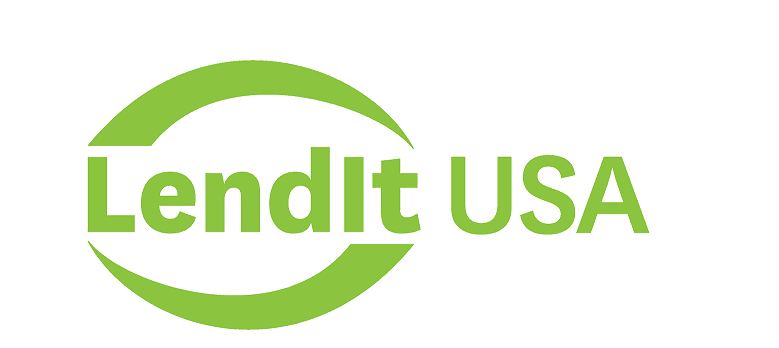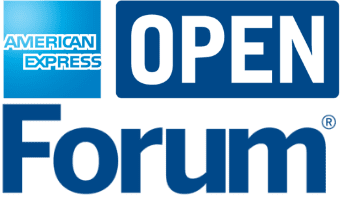APPAREL
INVENTORY
FINANCING
Lower costs & higher funding limits for your apparel store
Kickfurther offers purchase order finance for apparel, covering up to 100% of your inventory costs with flexible payment terms. Pay only after you sell, so you can focus on growing your apparel store without adding debt, giving up equity, or tying up cash in inventory.
- Save up to 30% compared to alternative lenders
- Fund inventory orders of $5,000 to over $5,000,000
- Customize your payment schedule from 1 to 10 months
- Restock and sell before making payments
What Is Purchase Order Financing for Apparel Brands?
Purchase order financing helps apparel businesses cover the upfront costs of fulfilling large inventory orders. Instead of using your working capital, a financer pays your suppliers directly. Once your customer pays, you settle with the financer, minus their fees.
Why Apparel Brands Rely on Purchase Order Financing
This financing option is ideal for brands facing high demand, but lacking the immediate cash flow to meet production costs. It’s straightforward, efficient, and designed to keep your operations running smoothly.
For clothing brands, the benefits of purchase order financing are hard to ignore:
- It preserves your cash flow, leaving room for other investments like marketing or product development.
- It lets you fulfill larger orders without resorting to loans or giving up equity in your company.
- It’s a lifeline during peak seasons or periods of rapid growth when cash can be stretched thin.
Streamline Your Apparel Business with Inventory Financing
Streamline Your Apparel Business with Inventory Financing
Body Text: Overcome cash flow hurdles and fuel your brand’s growth. Learn how apparel businesses can secure flexible financing to fund inventory and maximize profits.
Learn More on funding your clothing brand
How Purchase Order Finance Benefits Apparel Businesses
Running an apparel brand means juggling creativity with practicality. You’re not just designing clothes; you’re managing inventory, building supplier relationships, and making sure orders go out on time. When cash flow gets tight—especially with large purchase orders—clothing brand funding can be the lifeline that keeps everything moving.
The Benefits of Purchase Order Finance for ClothingBrands
Keeping Cash Flow Steady
Cash flow challenges are common in apparel. A big order might look exciting on paper, but paying suppliers upfront can leave you scrambling for funds. Apparel purchase order financing handles those upfront costs, so you can keep operations smooth and still have money available for essentials like payroll or marketing campaigns.
Handling Seasonal Highs and Lows
Every apparel brand faces seasonal shifts. Holiday collections, back-to-school shopping, and summer sales can skyrocket demand—but they also push production costs through the roof. With purchase order finance for apparel, you can cover the extra expenses of peak seasons without risking the rest of your budget.
Covering the Costs That Keep You Running
Beyond inventory, there are so many costs to manage: team salaries, rent for your storefront or warehouse, marketing campaigns to boost visibility—the list goes on. Through clothing brand funding, you free up working capital for these other critical expenses, ensuring your business stays agile and efficient.
Building Stronger Supplier Relationships
Suppliers appreciate timely payments. When they know you’re reliable, they’re more likely to prioritize your orders, extend favorable terms, or even offer discounts. Purchase order financing ensures you can pay on time, keeping your supplier relationships strong and your production schedule uninterrupted.
Growing Without the Growing Pains
Scaling up comes with its own set of challenges—bigger orders, higher production costs, and tighter deadlines. Apparel purchase order financing grows with you, giving you the ability to handle larger orders confidently without taking on traditional loans that could tie you down.
Staying Stocked and Ready for Anything
There’s nothing worse than running out of your bestsellers when demand is high. Purchase order financing makes sure you can keep your inventory full, so you never miss out on a sale because you weren’t ready.
Supporting Long-Term Investments
Sometimes, growth means spending money on things that won’t pay off immediately—like a new eCommerce platform, an upgraded inventory system, or a killer ad campaign. With the breathing room purchase order finance provides your apparel business, you can invest in the tools and strategies that set you up for future success.
Financing Options Tailored for Apparel Brands
Finding the right funding solution for an inventory-heavy business like an apparel brand isn’t always straightforward. That’s where Kickfurther steps in, offering a unique approach tailored to the needs of growing brands.
Why Choose Kickfurther to Finance Your Apparel Brand?
Unlike traditional financing, Kickfurther’s model is flexible, community-driven, and designed to keep your business moving forward without unnecessary financial headaches. Here’s why so many apparel brands are turning to Kickfurther:
No Payments Until Your Inventory Sells
Kickfurther lets you pay for your inventory only after you start selling it. That means no immediate repayments eating into your cash flow. You can create repayment schedules that align with your sales cycles, giving you the breathing room to focus on scaling rather than scrambling to cover upfront costs.
You Keep Full Ownership
Unlike equity financing, Kickfurther doesn’t ask for a piece of your business. You retain 100% ownership while still accessing the capital you need to grow. If you’re determined to scale without giving up control, this is a big deal.
It’s Not a Loan
Kickfurther isn’t about adding debt to your books. This distinction helps you maintain a strong financial position—especially important if you’re eyeing future investments or a potential sale. With Kickfurther, your working capital stays flexible, and your financial health remains in check.
Fast, Reliable Funding
When you need funding, timing can make or break an opportunity. Kickfurther often funds approved deals within minutes to hours, so you’re not left waiting when it’s time to act. Whether you’re prepping for a busy season or launching new products, the speed of funding ensures you’re always ready.
Proven Success with Apparel Brands
Kickfurther has already helped brands like SODO Apparel, Perk Apparel Inc., and DudeRobe fund their growth. These success stories show how the platform supports brands at different stages.
Support for Ongoing Growth
Kickfurther isn’t just a one-time fix. Its model allows you to finance multiple inventory cycles, giving you a reliable way to scale over time. Each successful funding round builds trust within the community, potentially leading to better rates for future raises.
Where you've seen us


- Create Your online account Create a business account, upload your business information, and launch your deal
- Get funded within minutes to hours Once approved, our community funds most deals within a day, often within minutes to hours, so you’ll never miss another growth opportunity.
- Control your payment schedule We pay your manufacturer to produce inventory. Make the introduction and you’re off and running! Outline your expected sales periods for customized payment terms. At the end of each sales period, submit sales reports and pay consignment profit to backers for each item sold.
- Complete and repeate Complete your payment schedule and you’re done! Often once the community knows you, you’re likely to get lower rates on your next raise.
See Who Else We’ve Helped
Frequently asked questions
Not seeing your questions here? Please feel free to reach out!
What do I need to apply for apparel brand financing?
Requirements vary depending on the type of funding and the lender. Here are some common items needed for funding applications:
- A solid business plan (required for traditional loans)
- At least two years in business (some online lenders may accept less)
- A personal credit score of at least 600
- A positive business history
- Profit-and-loss statements or proof of revenue
- A clear purpose for the loan
Can apparel brands get business loans with bad credit?
Absolutely. Even with bad credit, apparel brands can still find ways to secure business loans, though the terms and options might not be as favorable as those available to brands with strong credit scores.
Alternative lenders are a good starting point, especially for businesses with credit scores as low as 580. These lenders often provide short-term loans or lines of credit. Keep in mind, though, that higher interest rates and stricter terms usually come with the territory.
If your business has a co-owner or leader with better credit, having them co-sign the loan could open doors to more competitive terms. This is often a practical way to balance the challenges of a lower credit score.
Can I get financing for my clothing store with no money down?
Securing a loan with no money down is possible but rare among traditional loan types, including SBA loans. However, if your business sells physical goods or non-perishable consumables and generates $150,000 to $15 million in revenue over the past year, you may qualify for inventory funding through Kickfurther without a down payment.
What credit score do I need to qualify for apparel financing?
The required credit score depends on the loan type. Most lenders prefer a credit score of 640 or higher, supported by a strong business plan and profitability, for traditional business loans. Kickfurther inventory financing is available to business owners with a credit score of at least 600 and annual sales above $400,000.
What is the cost of financing for apparel makers?
Financing costs can impact profitability, as lenders require a return on their loans. If the cost of funding risks pushing your business into unprofitability, it may be worth reconsidering the loan terms.
Affordable options like SBA loans and Kickfurther inventory funding can help maintain profitability. Kickfurther is particularly useful for inventory funding, offering solutions to minimize costs while increasing your ability to scale efficiently.
What does Kickfurther do?
Kickfurther is the world’s first online inventory financing platform that enables companies to access funds that they are unable to acquire through traditional sources. We connect brands to a community of eager buyers who help fund the inventory on consignment and give brands the flexibility to pay that back as they receive cash from their sales. This alleviates the cash-flow pinch that lenders can cause without customized repayment schedules, allowing your brand to scale quickly without impeding your ability to maintain inventory or financial flexibility.
How can I create a new Kickfurther Co-Op (Consignment Opportunity)?
Launching a project involves 3 key steps:
- Create a basic profile including information about your business and product line. Once you’ve done this you can go live with an “upcoming Co-Op” profile that users can choose to follow to hear when your Co-Op launches.
- Determine your Co-Op structure using the Kickfurther calculator to determine costs, earnings, and timeline.
- Verify your Credibility Metrics with the Kickfurther team and finalize your Co-Op profile.
How fast will I get funded?
Once approved and the deal goes live, most deals fund within a day (often within minutes to hours), so you’ll never miss another growth opportunity.
Does Kickfurther fund all deals?
Your business must be compliant with State and Federal regulations and have an established track record of sales. Kickfurther is for inventory financing so you must have a physical product. Finally, all businesses are subject to approval by the Kickfurther quality team,
How much does Kickfurther PRO cost?
Kickfurther PRO is a monthly subscription based on your annual revenue. Kickfurther PRO companies can fund as much inventory as they’d like on the platform and pay only monthly consignment profit costs.


